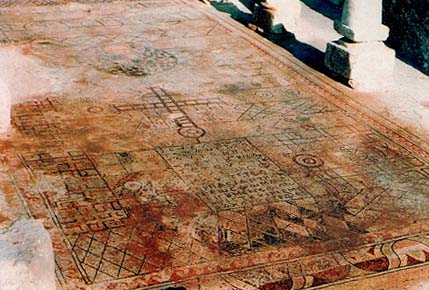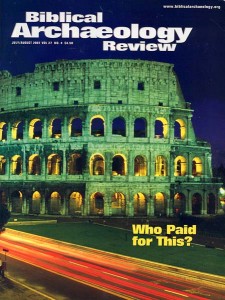
Once the Yattir excavation team got over the surprise of finding a magnificent sixth-century C.E. church on the site’s southern spur, where we were looking for much simpler, earlier remains, we began to think about how to interpret the many complex symbols embedded in the mosaic floor of the nave. We were immediately struck by the absence of animal and human images in the later floor, dated to 631 C.E., which was laid over the first mosaic. Images of birds and vine medallions from the original floor are still visible along the north side of the nave. Why did the later floor not contain any such images? Might it have been built in compliance with the second commandment’s prohibition of images? We cannot say for sure, but we do know that the human form is rarely found in the mosaic pavements of early churches and their complexes.1
The nave section of this mosaic is made up of 23 bands, or registers. Do the scanty geometric designs—like the large central medallion and rosettes, along with the rondels and stylized trees—in this curiously planned, sometimes roughly executed, almost amateurish mosaic have special meaning? I think they do.
Already a library member? Log in here.
Institution user? Log in with your IP address.

